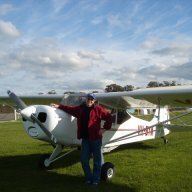The Spitfire v Hurricane debate is as old the aircraft. There were several times more Hurricanes than Spitfires in operation during the battle because the Air Ministry issued a purchase order to Hawker in 1937 but Vickers didn't get one until a year later. They commenced production without one because they had such confidence in Mitchell's design. So arguments over the respective numbers of aircraft shot down are a little specious.
The Hurricane was a conventional airframe, fabric over wood and tube, which allowed a lot of projectiles to pass through without serious damage. It was a steadier gun platform but seriously hampered by its lower ceiling and rate of climb as the fight progressed. Early in the Battle the bombers were coming over at around 12,000' which was ideal for the Hurricane with its greater drag giving it a slower climb to higher altitudes. As the fight progressed bombers at 26,000' with fighters to 34,000' were common so the Spitfire, with its stronger and more aerodynamic airframe took on the 109's leaving the Heinkels and Dorniers to the Hurris when the fighters came down.
The 109s and the Spits were pretty evenly matched during the Battle with advances in design giving each an advantage at different points. The 109 had a great advantage early on gained from its fuel injected engine which allowed it to bunt over into a dive and escape the Merlins which suffered momentary power loss caused by their carburettor floats cutting off supply due to g.The Spits countered this by half-rolling into the dive instead. The spits took a Great Leap Forward with the fitting of Rotol propellers, a carby mod designed by a woman and backplate armour before the Germans cottoned on. They got another huge advantage with the fitting of 2 stage superchargers a year or so later. The Spit was stressed to take higher g loads than the 109 and did not suffer the weakness in the tail that killed a fair number of Luftwaffe guys. There were a few reports of Spits getting up to what we now know was around Mach .85 in dives and coming back with delta wings afterwards. The Merlin II and III fitted to the Spit I were rated at 1030 hp. Byr 1944 the Merlin 66 was producing more than 1800 hp.
When the first FW 190's hit the air it was pretty devastating for the Mark V and Vb drivers who were way outclassed until they transitioned to the Mark XIX. Even then, they had a lot of problems, especially when the Long Nose arrived on scene. This was when the Tempest V took over as FW and later V2 killer. Pierre Costerman talks of his constant fear when driving a Tempest because of its horrendous swing on takeoff, brute power, and incredible speed rapidly attained in a dive. With a max speed of 380 mph and a climb of 4400' at sea level it was quite a machine. The Sabre II engine fitted to the V developed 2400 hp but later models went to an astonishing 3055 hp!
Kaz







